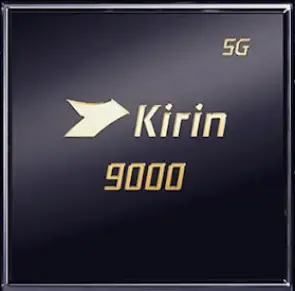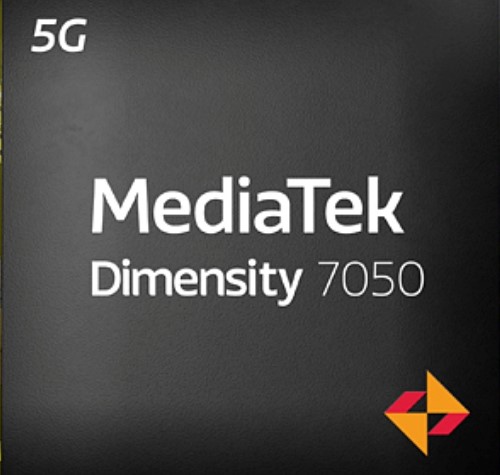Hisilicon Kirin 9000 vs MediaTek Dimensity 7050
We’ve thoroughly compared the latest Kirin 9000 vs Dimensity 7050 SoCs, developed by Hisilicon and Mediatek respectively. Our analysis covers the strengths and weaknesses of these 8-core CPUs, evaluated through their Geekbench, Antutu, and 3DMark scores and other key specifications.
Review
CPU Performance
Evaluation of Single-Core and
Multi-Core Processor Performance
Gaming Performance
Gaming and OpenCL/Vulkan
Performance of the Graphics Processing Unit (GPU)
Battery life
Energy Efficiency in Battery Usage
Tech Insist Score
Overall Performance Rating of the
Chip
Key Differences
Pros of Kirin 9000
- Kirin 9000 has 20.38% higher CPU clock speed than Dimensity 7050 (3130 vs 2600 MHz).
- Kirin 9000 has 33.33% smaller sized transistor than Dimensity 7050 (4 vs 6 nm).
- Kirin 9000 has 38.34 % better AnTuTu 9 score than Dimensity 7050 (762 K vs 551 K).
- Kirin 9000 supports Infinity % higher memory bandwidth than Dimensity 7050 ( 44 vs MHz).
Pros of Dimensity 7050
- Dimensity 7050 has 5.26 % higher GPU clock speed than Kirin 9000 ( 800 vs 760 MHz).
- Dimensity 7050 has 16.36 % higher memory frequency than Kirin 9000 ( 3200 vs 2750 MHz).
Benchmarks
Evaluating performance through competitive testing in leading benchmarks.AnTuTu 10
| CPU | 194527 | 144109 |
| GPU | 280796 | 140847 |
| Memory | 146761 | 126627 |
| UX | 140303 | 139513 |
| Total score | 762387 | 551096 |
GeekBench 6
Single-Core Score
Multi-Core Score
3DMark
3DMark Wild Life Performance
| Stability | 54% | 99% |
| Graphics test | 36 FPS | - |
| Score | 6040 | 4200 |
Specifications
Full list of technical specifications of Kirin 9000 and Dimensity 9300CPU
| Architecture | 1x 3.13 GHz Cortex-A77 3x 2.54 GHz Cortex-A77 4x 2.05 GHz Cortex-A55 |
2x 2.6 GHz – Cortex-A78 6x 2 GHz – Cortex-A55 |
| Cores | 8 | 8 |
| Base Frequency | 2050MHz | 2000MHz |
| Turbo Frequency | 3130MHz | 2600MHz |
| Instruction set | ARMv8.2-A | ARMv8.2-A |
| L2 cache | 64 KB | - |
| L2 cache | 0.512 MB | - |
| L3 cache | 4 MB | - |
| Process | 4 nanometers | 6 nanometers |
| Transistor count | 15.3 billion | - |
| TDP (Sustained Power Limit) | 4 W | 4 W |
Graphics
| GPU name | Mali-G78 MP24 | Mali-G68 MC4 |
| Architecture | Valhall 2 | Valhall 2 |
| GPU frequency | 760 MHz | 800 MHz |
| Pipelines | 24 | 4 |
| Shading units | 384 | 64 |
| Total shaders | 768 | 128 |
| FLOPS | 1076 Gigaflops | 686 Gigaflops |
| Vulkan version | 1.1 | 1.1 |
| OpenCL version | 2 | 2.0 |
| DirectX version | 12 | 12 |
AI Accelerator
| Neural processor (NPU) | AI accelerator | MediaTek APU 3.0 |
Memory
| Memory type | LPDDR5 | LPDDR5 |
| Memory frequency | 2750 MHz | 3200 MHz |
| Bus | - | - |
| Max bandwidth | 44 Gbit/s | - |
| Max size | 16 GB | 16 GB |
Multimedia (ISP)
| Storage type | UFS 3.1 | UFS 2.1, UFS 2.2, UFS 3.0, UFS 3.1 |
| Max display resolution | 3840 x 2160 | 2520 x 1080 |
| Max camera resolution | 1x 200MP, 2x 25MP | 1x 200MP |
| Video capture | 4K at 60FPS | 4K at 30FPS |
| Video playback | 4K at 60FPS | 4K at 30FPS |
| Video codecs | H.264, H.265, VP9 | H.264, H.265, VP9 |
| Audio codecs | AAC, AIFF, CAF, MP3, MP4, WAV | AAC, AIFF, CAF, MP3, MP4, WAV |
Connectivity
| Modem | Balong 5000 | - |
| 4G support | LTE Cat. 24 | LTE Cat. 18 |
| 5G support | Yes | Yes |
| Download speed 5G | Up to 7168 Mbps | Up to 2770 Mbps |
| Download speed 4G | - | - |
| Upload speed 5G | Up to 2560 Mbps | Up to 1250 Mbps |
| Upload speed 4G | - | - |
| Wi-Fi | 6 | 6 |
| Bluetooth | 5.2 | 5.2 |
| Navigation | GPS, GLONASS, Beidou, Galileo, NAVIC | GPS, GLONASS, Beidou, Galileo, QZSS, NAVIC |
Info
| Announced | October 2020 | May 2023 |
| Class | Flagship | Mid range |
| Model number | - | - |
| Official page | Kirin 9000 official site | Dimensity 7050 official site |

